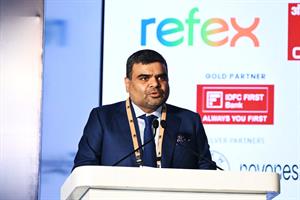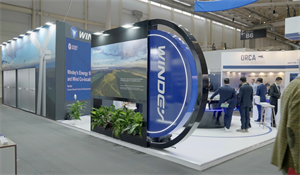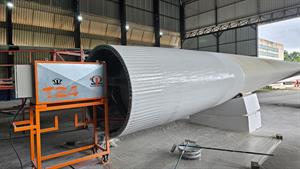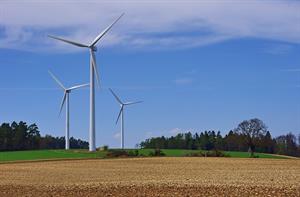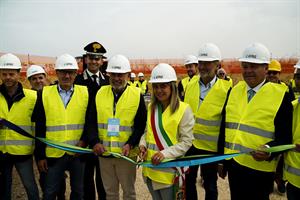Today there are more than 3,000 turbines either in operation or under construction in the UK’s waters. Considering that the first turbine was only installed 20 years ago, this represents a staggering level of growth. However, even when you combine the 10GW of installed capacity and the 10-15GW pipeline of consented projects, the industry still has its work cut out to install 40GW by 2030. So what needs to happen to ensure this target is met and to help deliver the UK’s net zero 2050 goal?
Move away from project-by-project consenting
Olivia Thomas, head of marine planning at the Crown Estate, says the industry has reached a point where a strategic approach is needed to address some of the environmental interactions the industry has as a whole. “We need to be thinking smartly about what we have by way of data and evidence and look at the information that is provided by industry at the post-consent monitoring point.” Thomas refers to the Offshore Wind Evidence and Change Programme (jointly sponsored by BEIS, Defra and the Crown Estate) as an example of cross-governmental support “recognising that we need offshore wind, but we need it in a way that doesn’t impact the marine environment”.
Sandra Leece, director of legal and company secretary at Vattenfall, advocates for a coordinated approach where all marine users work together. “It is about finding longer-term solutions to strategic issues we are dealing with in the ecosystem,” she says.
More coordinated transmission
In the context of even longer-term offshore wind targets, the point-to-point connection process is not sustainable, believes Barnaby Wharton, director of future electricity systems at RenewableUK. “A move to a more coordinated offshore wind transmission system will minimise the impact on the environment and on communities, and will be more cost-effective,” he says. Given that a large number of projects enabling the UK to meet its 2040 target have now gone through their grid connection process, he suggests an interim approach that involves sharing grid connections, where possible.
Chris Towner, partner at Womble Bond Dickinson, says the current OFTO (Offshore Transmission Owner) regime has proven to be bankable, so while the regulatory regime will need to be rewritten for a different approach, whatever it is replaced with has to avoid creating a “hiatus in financing”, potentially stalling projects.
Pegasus Group executive director, environment, Andy Cook says, “There needs to be thought given to a more holistic approach that minimises the amount of land-based infrastructure associated with offshore wind farm grid connections.” He points out that, from a landscape planning perspective, the point where offshore wind cables land at shore to connect with the onshore grid occurs in the coastal zone, which is highly valued, protected and subject to multiple statutory and non-statutory planning protections.
Maintain a collaborative approach
As the offshore wind industry has matured, recent auction rounds in markets – including the UK – are drawing fresh developers. They may not necessarily be familiar with the consenting process for offshore wind projects, therefore maintaining the collaborative approach that has worked so far is critical. Towner says some of the newer entrants, though familiar with offshore engineering projects, are “not used to interfacing with as many stakeholders as there are in the offshore wind space … they may take a different view about how to approach things. If they are not getting the response they are seeking through collaboration, they may be swift to raise the fact that they are investing an awful lot in option fees, which is adding pressure to bring projects through faster.”
Clarity needed on future CfDs
After the Allocation of Round 4 of Contracts for Difference (CfDs) two further rounds are expected, but Wharton would like to see a clear pipeline of CfDs, with clarification of dates and capacities of those future CfD rounds.
Leece says that from a developers’ perspective, more certainty as to when these CfDs are going to come forward would be helpful for planning ahead.
Better support for consenting authorities
Gaining consent to build an offshore wind farm is a “hugely time-consuming process”, requiring developers to invest a lot of time and money, says Leece. Consenting involves multiple agencies and public bodies, so investment by the UK government into some of the bodies that are involved in the process would enable offshore wind projects to reach a decision in a timely manner, according to Wharton. Ensuring these bodies are adequately resourced will enable them to handle increased volumes of work as the UK offshore wind industry becomes more ambitious in hitting its targets, he advises.
Greater regulatory alignment
While Towner believes the 40GW target is achievable, he thinks “tensions between different regulatory spheres” can impact consenting processes for projects. As an example, Ofgem in its assessments into how offshore wind cabling is installed is looking for what constitutes an efficient and economic test, which doesn’t take into account all the potential impacts on the marine environment.
Towner says it would be useful if the government aligns the regulatory tensions that are placed on developers. “There should be some recognition of the potential impact – or the steps that are taken to mitigate or compensate for the potential impact – on the marine environment of offshore wind developments, actually in terms of the regulatory regime itself, rather than having two parts of central government effectively placing different competing tensions on developers,” he says.


.png)

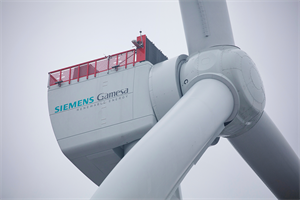
.png)

